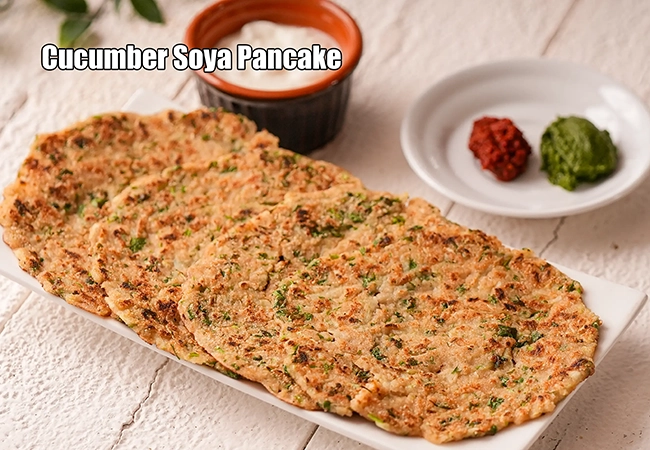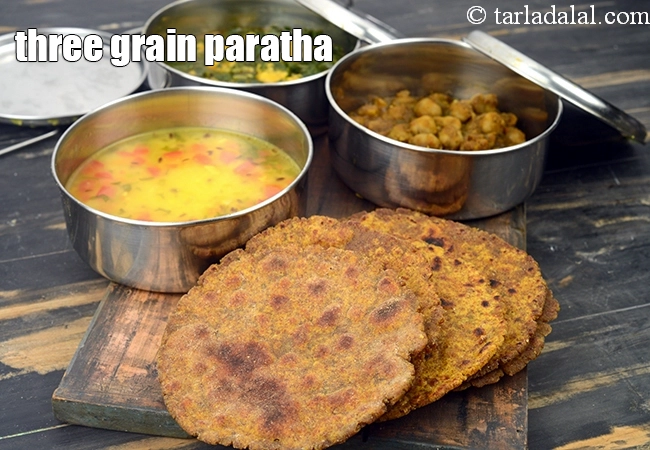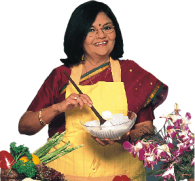Soy flour

Table of Content
What is soy flour, soya flour, soya atta? glossary, uses, benefits, recipes
Soya atta, or soya flour, is becoming increasingly popular in Indian kitchens. This fine powder, made from ground roasted soybeans, is a true powerhouse of plant-based protein. It's an affordable and versatile way to boost the nutrition in everyday meals, and unlike traditional wheat flours, it's naturally gluten-free, making it ideal for those with gluten sensitivities.
Making soya atta involves carefully cleaning and de-hulling soybeans, then roasting and grinding them into a fine flour. This process helps neutralize enzymes that can cause digestive issues and also gives the flour a pleasant, nutty taste. Both full-fat and defatted versions are used, with the defatted type being even more concentrated in protein. Its fine texture means soya atta blends smoothly into various dishes.
Soya atta is incredibly adaptable in Indian cooking. Most commonly, a small amount is mixed with regular atta(wheat flour) to make rotis, chapatis, or parathas, boosting their protein and fiber content without significantly changing the texture. Beyond flatbreads, it's used to create protein-rich versions of popular snacks like soya tikkis, cutlets, and savory chillas (pancakes). Its binding qualities also make it great for thickening gravies, soups, and sauces, and it can even be added to dosa or idli batters.
The widespread adoption of soya atta in India is largely due to its impressive nutritional benefits. It's an outstanding source of complete protein, meaning it contains all nine essential amino acids our bodies can't produce. For a country with a large vegetarian population, this makes soya atta an invaluable and accessible source of high-quality protein, vital for muscle repair, growth, and overall bodily functions. Just 100 grams of dry soya flour can provide over 40-50 grams of protein, a significant amount compared to many other plant-based options.
Beyond its high protein, soya atta offers many other health advantages. It's naturally low in fat and completely cholesterol-free, making it a heart-healthy choice that can help manage cholesterol levels. Its rich fiber content aids digestion, promotes a healthy gut, and contributes to feeling full, which is beneficial for weight management. Plus, soya atta is a good source of vital micronutrients like iron, calcium, magnesium, and B vitamins, supporting bone health and overall vitality.
Given its strong nutritional profile, soya atta is often recommended for those with specific dietary needs or health goals. Its low glycemic index makes it a suitable option for diabetics, as it helps prevent rapid spikes in blood sugar. For those aiming for weight loss, the combination of high protein and fiber promotes satiety, helping reduce overall calorie intake. It also provides crucial nutrients that can be beneficial during pregnancy. As a versatile and nutrient-dense ingredient, soya atta empowers Indian households to easily enhance the health benefits of their daily meals.
How to select soy flour, soya flour, soya atta
• Soy flour is nowadays commonly available in all grocery stores.
• Soy bean has an anti-nutritional factor that causes poor digestibility of protein. It is therefore better to buy readymade flour as it has all anti-nutritional factors removed. Likewise, if you want to use with wheat flour, mix readymade soy flour with wheat flour, rather than mix soybeans and wheat and grind in a mill.
• Read the package before buying, to check the packed and use-by dates.
Culinary Uses of soy flour, soya flour, soya atta in Indian cooking
• Stir the soy flour once before measuring out for any recipe, as it sometimes gets caked.
• Soy flour can be used as-is, or, for a pleasant nutty flavour, it can be toasted slightly before adding to a recipe. To do this, put the soy flour in a dry skillet and cook it, stirring occasionally, over moderate heat.
• Soy flour can be used coarsely powdered as a thickening agent in gravies and sauces, or it can be added, finely powdered, to baked goods.
• It is used extensively to make fudge and other candies, pies, doughnuts, cakes and rolls, pasta, pancake mixes and frozen desserts.
• In baked products, soy adds tenderness and moisture and helps to keep products from becoming stale.
• Products containing soy flour brown more quickly, so it is sometimes necessary to either shorten the baking time or decrease the temperature slightly.
• For products that do not contain yeast, such as muffins and cookies, replace up to a quarter of the total amount of flour called for in a recipe with soy flour. For products that are yeast-raised, such as bread, replace up to 15 per cent of the flour called for in the recipe by placing two tablespoons of soy flour in the cup before measuring each cup of flour. Using more soy flour than this will cause breads to be too heavy and dense, since soy flour is free of gluten, the protein that gives structure to yeast-raised baked products.
• Soy flour also makes a good egg substitute in baked products. Replace one egg with 1 tablespoon of soyflour plus 1 tablespoon (15ml) of water.
• In fried foods, like doughnuts, soy flour reduces the amount of fat that is absorbed by the dough.
• Soy flour can also be used to make a quick, homemade soymilk.
cucumber soya pancake recipe | soya cucumber chilla | savoury cucumber pancakes

three grain paratha recipe | Indian ragi jowar paratha for weight loss | gluten free paratha | jowar, ragi and soya paratha

How to store soy flour, soya flour, soya atta
• Because soy flour must always be refrigerated, it is not often available in bulk.
• Keep soy flour in the refrigerator for several months or in the freezer for up to a year.
Health benefits of soy flour, soya flour, soya atta
• Soy flour is rich in vitamins, minerals, isoflavones and lecithin, nutrients proven to help lower cholesterol, prevent cancer and loss of bone mass.
• Soy is strongly recommended for diabetics, expectant mothers, growing children, cardiac patients, weight-watchers and the aged.
• A 100 per cent vegetarian high quality protein source that does wonders for young and old.
• Especially great for growing children, as it provides critical vitamins, minerals, fibre and protein.
• Eating more high-fiber foods like fruits, vegetables, whole grains and soy nuggets helps to lose weight.
• Soy is one of the best non-fish sources of essential omega-3 fatty acids, which may help reduce the risk of coronary heart disease.
• Soy protein may provide positive results for people with high blood pressure.
• Soy protein is beneficial to women in post-menopausal years.
• Soy is low in fat and sodium, and may help reduce the risk of heart disease.

Related Glossary
Follow US
Recipe Categories
- Vitamin B12 Cobalamin Rich Recipes 33 recipes
- Low Calorie, Weight Loss Indian Recipes 421 recipes
- Low Cholesterol Indian Recipes 308 recipes
- Healthy Indian Breakfast 373 recipes
- Indian Diabetic recipes 559 recipes
- Indian Pregnancy recipes 461 recipes
- Zero Oil Indian Recipes 133 recipes
- Iron Rich Indian recipes 268 recipes
- Healthy Indian Acidity recipes 137 recipes
- Healthy Sabzis 108 recipes
- Indian Healthy Veg Snack 276 recipes
- Healthy Heart Recipes 415 recipes
- Healthy Veg Indian Soups 74 recipes
- Calcium Rich Indian 373 recipes
- High Blood Pressure Indian Recipes 103 recipes
- Healthy Indian Salads Recipes 137 recipes
- Low Carb Indian Diet, recipes 163 recipes
- Hypothyroidism Diet 63 recipes
- Arthritis Diet 68 recipes
- High Protein Indian recipes 95 recipes
- Vitamin K Diet 42 recipes
- Fatty Liver Diet 39 recipes
- PCOS 136 recipes
- Gluten Free Veg Indian 196 recipes
- High Fiber 328 recipes
- Indian Cancer Patients 275 recipes
- Jaundice Diet 45 recipes
- Sprouts 61 recipes
- Typhoid 43 recipes
- Irritable Bowel Syndrome (IBS) 23 recipes
- Kidney Stone Diet 10 recipes
- Home Remedies 213 recipes
- Senior Citizen 195 recipes
- Healthy Indian Drinks and Juices 213 recipes
- Diet for Dialysis 10 recipes
- Gout Indian Recipes 17 recipes
- Potassium Rich 80 recipes
- Vegan 195 recipes
- Indian recipes to treat Vomiting 8 recipes
- Forever Young Diet, Anti Aging Indian Diet 255 recipes
- Antioxidant Rich Indian 445 recipes
- Vitamin B1 Rich Indian Foods, Recipes 101 recipes
- High in Omega 3 Fatty Acids 32 recipes
- Zinc Rich Foods 55 recipes
- Vitamin A Rich, Beta Carotene, Retinol 89 recipes
- Malaria Diet 19 recipes
- Magnesium Rich 94 recipes
- Healthy Indian Dinner 85 recipes
- Vitamin C Rich Indian recipes 118 recipes
- Low Veg Glycemic Index 86 recipes
- Lower Blood Pressure Salads 8 recipes
- Healthy Indian Lunch Recipes 29 recipes
- Lactation 25 recipes
- Vitamin E Rich 51 recipes
- Hyperthyroidism Diet 47 recipes
- Vitamin B3, Niacin Rich 41 recipes
- Post Surgery Diet 42 recipes
- Selenium 27 recipes
- Phosphorus Rich Indian Recipes, Foods 74 recipes
- Lower Blood Pressure Desserts Sweets 14 recipes
- Copper 15 recipes
- Foods Rich in Vitamin B2 Riboflavin 22 recipes
- Vitamin B6 Diet 36 recipes
- B Vitamins 231 recipes
- Vitamin B9 Rich Folate 50 recipes
- Marathoners, Endurance Athletes, Triathlete 225 recipes
- Manganese Diet 32 recipes
- Thalassemia 18 recipes
- Detox Water, Fruit Infused Water 42 recipes
- Lactose Free Dairy Free 22 recipes
- Omega 6 Fatty Acids 32 recipes
- Phytonutrients 51 recipes
- Chronic Kidney Disease Indian recipes 12 recipes
- Selenium1 0 recipes
- Quick Snacks / Quick Starters 385 recipes
- Quick Breakfast Indian 131 recipes
- Quick Sabzis 117 recipes
- Quick Rotis / Parathas 46 recipes
- Quick Indian Sweets 139 recipes
- Quick Stir-Fries 51 recipes
- Quick Vegetarian Indian Soups 72 recipes
- Quick Chutneys 67 recipes
- Quick Vegetarian Rice, khichdi Recipes 56 recipes
- Indian Snacks Under 10 Minutes (Quick Veg Recipes) 44 recipes
- Quick Indian Dips, Gravies & Sauces 105 recipes
- Quick Veg Indian Pizza 17 recipes
- Quick Veg Pasta 25 recipes
- Quick Pickles / Aachar 25 recipes
- Quick Dals / quick Kadhis 29 recipes
- Snacks under 5 minutes 33 recipes
- Quick Healthy Recipes 43 recipes
- Quick Pressure Cooker 46 recipes
- Quick Desserts 47 recipes
- Quick 3 Ingredients 63 recipes
- Quick Indian Desserts 20 recipes
- Quick 4 Ingredients 41 recipes
- Quick 5 Ingredients 42 recipes
- Kids Tiffin Box 319 recipes
- Recipes for Toddlers (1-3 Years) 32 recipes
- Sweet Recipes for Kids 456 recipes
- Recipes for Baby (10 to 12 Months) 17 recipes
- Quick Indian recipes for Kids 72 recipes
- Indian Breakfast Recipes for Kids 192 recipes
- Recipes for Weaning (8 to 9 months) 22 recipes
- Healthy Foods for Kids 196 recipes
- Snack Recipes for Kids 619 recipes
- Recipes Kids can make 36 recipes
- Kids After School 794 recipes
- Kids Jar Snacks 66 recipes
- Finger Foods for Babies, Toddlers and Kids 76 recipes
- Kids Weight Gain 43 recipes
- Kids Wraps and Rolls 23 recipes
- Kids Veg Pasta 27 recipes
- Kids Brain Boosting 68 recipes
- Protein rich food for kids 71 recipes
- Recipes for Weaning 15 recipes
- Kids Pizzas 30 recipes
- Babies, Toddler and Kids Iron Rich Foods 31 recipes
- High Fiber Foods for Kids 39 recipes
- Kids High Energy Indian Foods 103 recipes
- Kids Noodles 37 recipes
- Kids Calcium Rich Indian recipes 92 recipes
- Babies recipes, 6 to 18 months 34 recipes
- Kids Recipes for Increasing Immunity 10 recipes
- Kids Weight Loss 58 recipes
- Teething Recipes for Babies 10 recipes
- Cereals and Pulses for 8 to 9 months Baby 8 recipes
- Weaning foods at 7 months 12 recipes
- Indian Teen 315 recipes
- Starters / Snacks 2138 recipes
- Indian Breakfast Recipes 819 recipes
- Main Course Recipes 925 recipes
- Indian Salads 385 recipes
- Indian Desserts , Sweets 985 recipes
- Indian Soups 249 recipes
- Indian Beverages, Indian Drinks 483 recipes
- Indian Dinner 903 recipes
- Indian Dinner1 0 recipes
- Indian Lunch 829 recipes
- Side Dishes 449 recipes
- Indian Travel Food 433 recipes
- Indian Barbeque1 recipes 22 recipes
- Frozen Foods, Indian Freezer Recipes 67 recipes
- Whole Wheat Recipes 56 recipes
- Indian Comfort Foods 212 recipes
- Dinner Menus 56 recipes
- Easy Indian Veg 70 recipes
- Innovative Indian Recipes 27 recipes
- No Cook Indian 37 recipes
- Advanced Recipes 10 recipes
- Cakes with Eggs 13 recipes
- Microwave 229 recipes
- Oven 619 recipes
- Indian Steamer Recipes 102 recipes
- Kadai Veg 407 recipes
- Indian Barbeque Recipes 43 recipes
- Sizzler tray 15 recipes
- Mixer 566 recipes
- Pressure Cooker 315 recipes
- Tava 647 recipes
- Non-stick Pan 1393 recipes
- Indian Freezer recipes, meals 57 recipes
- Appe Mould 18 recipes
- Pan 223 recipes
- Non Stick Kadai Veg 203 recipes
- kadai Indian 150 recipes
- Refrigerator 176 recipes
- Waffle Indian recipes 6 recipes
- Handi 12 recipes
- Juicer and Hopper 65 recipes
- Grill 31 recipes
- Toaster 21 recipes
- Gas Toaster 8 recipes
- Steam 72 recipes
- No Cooking Veg Indian 335 recipes
- Vegetarian baked Indian recipes 380 recipes
- Boiled Indian recipes 129 recipes
- Deep Fry 260 recipes
- Indian Tawa 265 recipes
- Shallow Fry Indian 25 recipes
- Microwave1 172 recipes
- Saute 273 recipes
- Indian Pressure Cooker 171 recipes
- Stir-fry 101 recipes
- Roasting 0 recipes

















